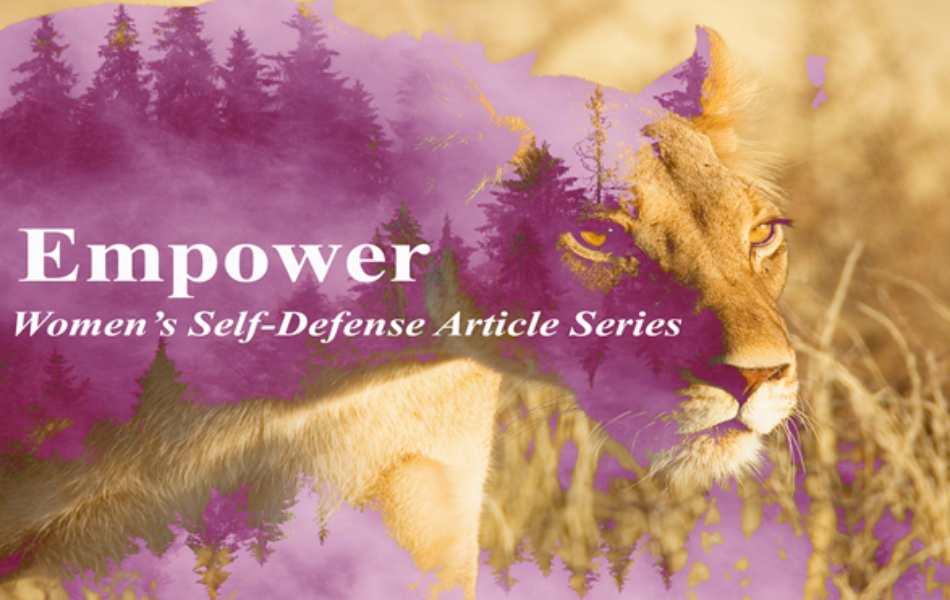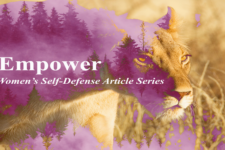
Empower: Situational Awareness
Her glittering eyes scan the plains. Through the tall blowing grass, her attention is on movements great and small, nothing is insignificant. No distraction can break her focus as she foresees all that is in her path. Imagine being able to see all that a lioness notices. To detect everything going on around you, no matter how big or small it may be. The good news is that you can! By training yourself to be aware of your environment, you can significantly decrease your chances of being the target of a perpetrator.
However, there are many distractions that divert our attention, and unfortunately, those distractions make us a soft and easy target. As women, we want to become hard targets, someone who presents a risk to an attacker by being aware. A point I think is important to understand is as women, it is not our job to convince perpetrators we are a threat to them, because usually, we are not bigger or stronger than they are. Our job is to convince them we are a risk. We want to pose a risk greater than the potential reward they are seeking, whether it be a purse, phone or money. The best way to convince someone you are a risk is to have situational awareness.
Essentially, there are three phases of situational awareness, which are you can remember through the acronym P.U.P.—perception, understanding, and prediction. Each part of situational awareness contributes to your ability to be able to assess who and what is around you and giving you the best chance of anticipating what will happen.
he first phase in situational awareness is perception, which requires you to be alert and intaking information about what is occurring in your environment. This phase includes being aware of people, events, and places that make up your surroundings. No detail is unimportant, no matter how big or small. Clothing, mannerisms, demeanor, tattoos, brand names and any other unique details are important to note. Learn to recognize interactions occurring between individuals or groups. Energy level, attitude, body language, tone of voice, and facial expressions help you interpret what is happening during an interaction. Make sure you are aware of where you are in relation to exits, entrances, and the types of buildings that surround you. Learn to orientate yourself in position which allow you to observe the most. While this may sound like an overwhelming number of things to consider, do not be discouraged. Start slowly, choose one or two parts to begin observing and then incorporate more as you become more comfortable. Take your time at first, and then as you progress, you will find it becomes a natural part of what you do.
The second phase is understanding the information you have perceived in your environment. This phase involves profiling and threat analysis. Profiling is simply taking the aspects you have observed about a person and then analyzing those observations to determine what kind of a person they are. Profiling can be as simple or complex as you want it to be, and you will be surprised by how much you can learn about someone by watching them. Threat analysis usually occurs after the profiling process because, based on your profile of a person, you can determine how much of threat the person is. Now, you need to understand not everyone is out to get you, but if you feel they pose a potential threat, then be more aware of their movements. Intuition plays a big role in this phase. Never dismiss any uneasy or uncomfortable feelings, because most of the time they are correct. When it comes to safety, trust your intuition.
The final phase of situational awareness is prediction, which is based on your understanding of your environment. After observation and analysis, you should be able to accurately predict what will happen within your surrounding environment. All the information you acquired in the first two phases will allow you with some level of correctness project, what circumstances are most likely to occur. This will help you significantly when it comes to anticipation, because it will help you to foresee and avoid dangerous scenarios. You do not have be right all the time, but by having an idea of what might happen, you will be better prepared and less likely to be taken by surprise. By eliminating the surprise factor, you greatly reduce the odds of being targeted.
As you can see, each of the three phases of situational awareness directly correspond to each other. Being situationally aware significantly decreases your chances of being targeted by a perpetrator because you have made yourself both a hard target and a risk. I encourage you to incorporate the phases of situational awareness into your daily life, and you will begin to take more notice of what happens around you. May you walk in confidence and without fear this week, knowing you are strong and beautiful.






